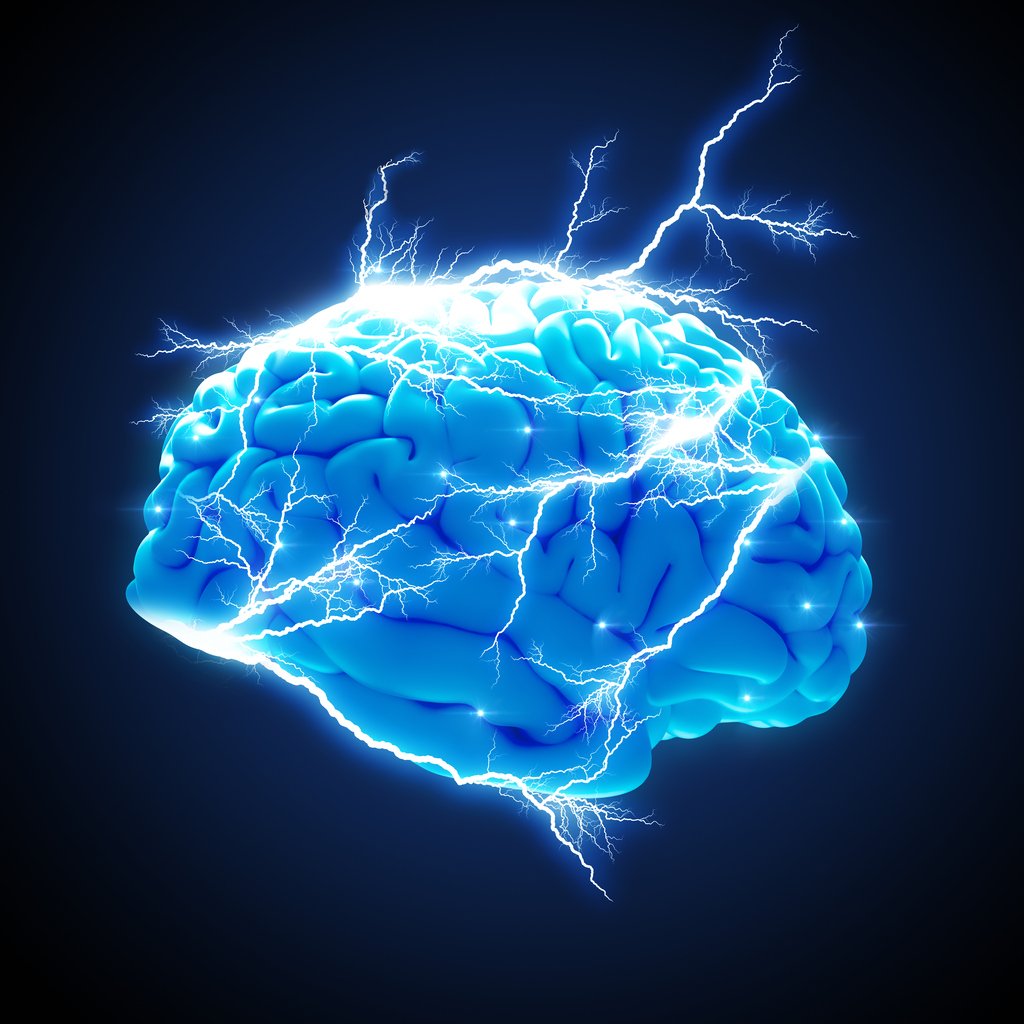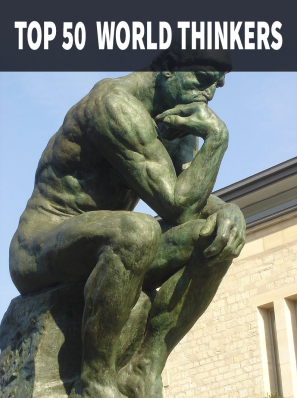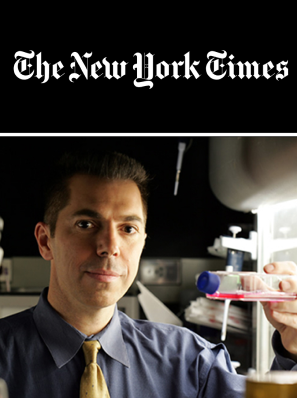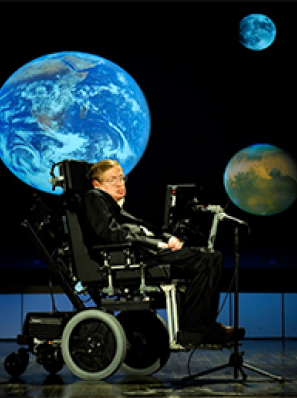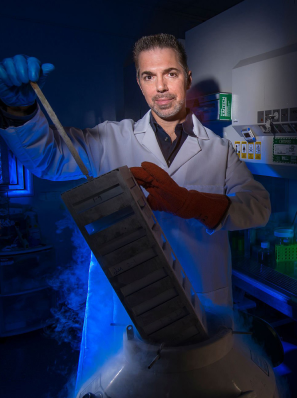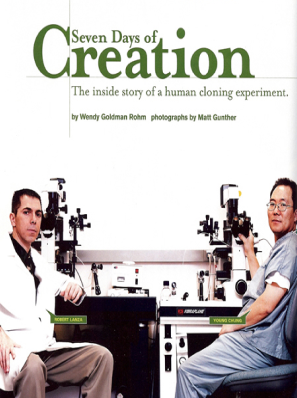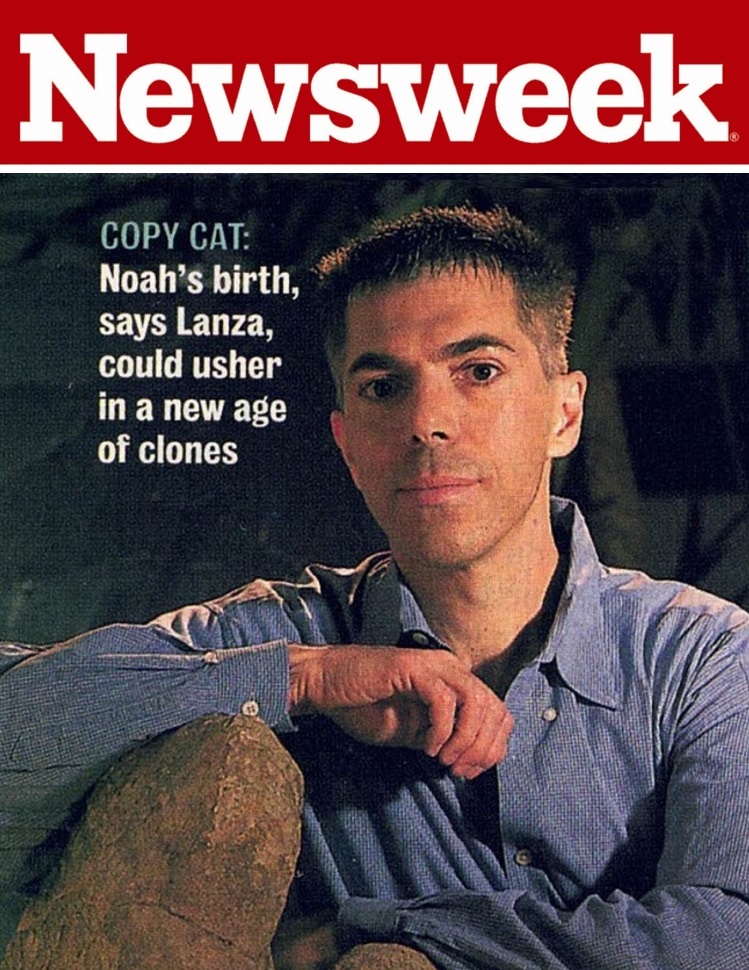Adapted from The Grand Biocentric Design, by Robert Lanza and Matej Pavsic, published by BenBella Books (2020).
You keep staring at the repair man. His words are starting to sink in. The fabulous and expensive generator you bought a few years ago to keep the lights burning during storms and power failures needs a major repair.
“A head gasket?”
You echo the phrase he just used, fearing that it has a pricey ring to it. “What exactly is a head gasket?”
You listen with interest while the mechanic explains the basics of four-stroke engines and why the two big sections of the engine block require a compressive layer that prevents internal gasses and oil from leaking out.
Modern engineering is indeed a marvel. But the real marvel is how your experience of even the very mundane reality of this repairman’s visit can be occurring in the first place. How is it that you can perceive this person in front of you in such 3-dimensional detail, his words (at least mostly) comprehensible, each of you perceiving events subjectively, while also managing to communicate within a seemingly very real shared reality? How does your consciousness work?
Let’s start by coming to a stop at a red traffic light. We all agree the stoplight is “red,” even though we can never prove that the exact visual experience I call “red” is the same as yours. It doesn’t matter because, whatever it is, it stays consistent, and it has since someone thought to name the colors in the first place.
One of the big mysteries of awareness, of course, is why we experience something called “red” to begin with. To understand the problem, consider the fact that light is part of the electromagnetic spectrum, which is a gradient of electromagnetic radiation running from shorter to longer wavelengths. Thus, we might experience the visual spectrum as a gradient of brightness—as a continuum of grays ranging from dark to light. It could be a simple quantitative experience. But, for humans and some other animals, it isn’t. Instead we have a unique qualitative experience.
In 1965, researchers discovered 3 types of cone-shaped cells in the eye that, when stimulated, are subsequently associated with the visual sensations of red, green, and blue. Stimulation of each type of cone is associated with a unique experience. But how and why? A clue comes from the fact that fully two-thirds of these cone-shaped cells are the so-called “L type” responsible for the sensation of red. This lopsided majority suggests, from the outset, that perceiving light in the “red” range of the visual spectrum is of higher priority than perceiving other wavelengths of light—and thus that our perception of colors serves a purpose.
In evolutionary terms, red likely gets extra attention from the brain because it’s associated with alarming, important events like injury, fire, and blood. In life, the sudden presence of that color in your consciousness usually meant either that your bicycle had gone off the road into a field of begonias, or, more worrisome—and, in the early days of humankind, more likely—that blood was pouring down your arm, requiring immediate attention.
This possibility of a life-threatening situation made red the traditional signal of bad news that shouldn’t be ignored. We know this instinctively, which is why no one except a contrarian teenager would dream of painting their bedroom a bright red, at least not if they valued a tranquil environment. This explains why red was universally agreed on as the color for things like warning notices and railroad and, later, automobile stop signals. And why even culturally distinct nations and those antagonistic enough toward the West to want to thumb their noses at new modern conventions didn’t buck this rule. Obviously, the qualitatively attention-getting experience we call “red” is associated with a deep built- in pattern of emotions and neural connections.
A similarly distinct circuitry comprising labyrinthine clusters of cells is connected with the other colors and cones—each associated with separate areas of the brain. When these cell architectures are stimulated via their respective cones in the retina, we have distinctive experiences: blue evokes the vastness of the sky and yields a much calmer feeling than red, and green conveys countless bygone centuries of plants and vegetation and is a comforting invocation of life.
We believe that these three most basic colors and their various combinations must have had unique survival value during early evolution, and thus they are associated with their own functional pathways in the brain. When the complex relational logic associated with these distinct clusters of cells is brought into the actively entangled region of the brain associated with consciousness, we have discrete sensations even if we rarely give a second thought to the components that make up each of these colors, any more than we can discern the ingredients in mayonnaise or a piece of Cap’n Crunch.
This is but a brief sample of the workings of processes acting below our conscious perceptions and decision-making. To understand those of which we are aware, we must return to the cloud of quantum activity that surrounds the brain’s countless neuro-electric occurrences. If it is an observation made in consciousness, then why shouldn’t a subconscious event count, such as when we suddenly find ourselves in a tense mood but are unaware that it’s due to the odd red color of the walls of the club we’ve just entered? After all, the subconscious is often the decisive factor in such events, as it is with many reflex actions.
The answer is that activities at a subconscious level are in a quantum superposition—meaning, all possibilities simultaneously coexist. But the moment their results pop into reality and conscious awareness, a perceptible “choice” is made. This is key because, as explained in our new book The Grand Biocentric Design, there are always many possible chains of brain activities (in many possible Everett branches). But when consciousness hangs up on one of them—subjectively perceived as the awareness of a definite outcome—this can now be mathematically described as a collapse of the wave function.
It might be helpful to recall Schrödinger’s thought experiment involving the most famous cat in the history of physics. In that example, a chain of events began with a radiation source monitored by a Geiger counter. The wave function of the radioactive material was a superposition of two states—one in which there is a decay and one in which there isn’t. Let’s simplify by transferring this situation to a modern lab, omitting the hassles of PETA involvement. If there is a decay, the counter detects a photon and produces a brief click that enters the ears of the lab technician. There the sound is transformed into an electrochemical signal that is transmitted via the nerves to the brain, where the processing of the information begins, first at the subconscious level. Then the information is construed in consciousness as “a click of the Geiger counter,” followed by a cascade of interpretative judgments in the cerebral cortex. This entire sequence of events comprises one possible chain of brain activity, but note that the strictly physical radioactive decay and the neural responses are all inexorably linked in a single outcome! The other chain corresponds to the case in which there was no decay, and that corresponds to a completely different chain of brain activity leading to the awareness in consciousness that the counter has produced no click. There are thus two possibility branches—one ending with the conscious awareness of a click and the other in which there was only silence—and according to quantum theory, both of these were equally real (in superposition) until the moment of perception. But from my first-person’s perspective, I cannot be in a superposition of these two states of awareness, for they are mutually exclusive: Obviously I cannot both hear a click and also not hear it. So I find myself in exactly one of those two states of awareness.
Wave function collapse is thus indeed triggered by my perception of one thing or the other. But what may be news to the reader is that the two branches extend to include the radioactive radium, the instrument, its oscillating speaker, the ear’s vibrating tympanic membrane, and all those countless brain neurons. All are inexorably a part of a single Everett branch and are inseparable.
How different parts of the brain are involved in a superposition and its collapse into a singular experience depends on details of how the brain processes information, so here is where it gets a little bit technical. All of the brain’s neurons process information through electrical and chemical signals. Neurons are electrically excitable, maintaining differences in voltage across their membranes by means of “ion pumps.” The ions in the brain are atoms of sodium, potassium, chlorine, and calcium that are missing electrons, which gives them each a bit of electrical charge. They flow along ion channels embedded in the cell’s membrane which causes changes in the membrane voltage. If the voltage changes by a large enough amount, an all-or-nothing electrochemical pulse called an action potential (also known as a “nerve impulse”) is generated, which zooms along the cell’s axon at anywhere from 70 to 250 miles per hour, to where it can activate synaptic connections with other cells. Thus, all information in the brain is ultimately mediated through ion dynamics.
These ions, as well as the channels through which they enter or leave the cell, are very small. As the physicist Henry Stapp has pointed out: “This creates, in accordance with the Heisenberg uncertainty principle, a correspondingly large uncertainty in the direction of the motion of the ion…That means that the issue of whether or not the calcium ion (in combination with other calcium ions) produces an exocytosis (leaves the cell) is a quantum question basically similar to the question of whether or not a quantum particle passes through one or the other slit of a double-slit experiment. According to quantum theory the answer is ‘both.’”
Although Stapp focuses on whether calcium ion channels open or close, there is much more to the mechanism than that. For instance, electrophysiology probes allow us to study the movement of various different types of ions within the cells of the brain. If an electrode is small enough it’s possible to directly observe the electrical activity within individual cells. Thus, we have the ability to capture the entire mechanism involved in the emergence of time—starting from the quantum level (where everything is still in superposition) to the macroscopic events occurring in the brain’s neurocircuitry (see The Grand Biocentric Design, Chapter 11 for more about the brain and the emergence of time).
Talking about calcium channels opening and closing is insufficient, as the equation reduces to merely a cloud of quantum information when you expand the mechanism to include the ion dynamics involved in the whole temporal sequence of events, from changes in ion gradients within the cell to axon firing. The underlying main story involves the quantum information that arises all at once when the process is expanded to include the ion dynamics and their superpositions.
That’s because it is modulation of the ion dynamics at the quantum level that allows all parts of the information system that we associate with consciousness—with the unitary “me” feeling—to be simultaneously interconnected.
This is the key. What is relevant here is that those entangled regions of the brain, which together constitute the system perceived as consciousness, arise as such because a sense of “time” emerges simultaneously throughout all of the spatial algorithms/neurocircuitry responsible for generating a conscious, real-life (spatiotemporal) experience.
It is important to note that the spatial separation between neurons in the brain is meaningless before this process occurs. It’s an all-or-nothing phenomenon.
At any given moment, there is a cloud of quantum activity associated with consciousness. The exact things you experience will change depending on which memories and emotions are recruited into the system at the time, corresponding to different networks of the brain’s neurocircuitry. This spatiotemporal logic can further extend to the rest of the brain, peripheral nervous system, and even to the entire world you observe at the time. Further evidence of this can be found in patients with DID, who have distinct or split identities—two or more selves, as in the famous case of Sybil. Thus, the same brain can have multiple regions that each experience a different “me.” In such cases, a large portion of the neurocircuitry associated with each entangled system may overlap, and the distinctiveness—i.e., the different “me”—may arise because different memories and areas of emotion are recruited at different times. Sybil might be “Peggy” now, “Vicki” tonight, and “Sybil Ann” tomorrow, depending upon the areas of the brain that are entangled at any given moment.
We can actually observe the process, because analogous experiments have been performed that nicely illustrate superpositions. In a 2007 experiment published in the journal Science, scientists shot photons into an apparatus and showed that they could retroactively alter whether these photons behaved as particles or as waves. The photons had to “decide” what to do when they passed a fork in the apparatus. Later on, after traveling nearly 50 meters past the fork, the experimenter could flip a switch … and whether or not they did determined how the particle had behaved at the fork in the past.
This type of “delayed-choice” experiment was first proposed by eminent Princeton physicist John Wheeler (Einstein’s colleague, who also gave us the terms “black hole” and “wormhole”). However, according to Wheeler himself, the retroactive interpretation of the delayed-choice experiment is somewhat misleading. Instead, the experiment simply shows that the logic of what occurs at the fork (i.e., what happened in the apparatus in the past) depends on whether the second beam splitter is on or off—in other words, that nothing is collapsed until the second choice/observation is made in the present.
Whichever way you interpret it, the 2007 experiment and others like it seriously call into question whether there is a “fixed past.” Indeed, since the 1960s, theoretical physicists like Wheeler have expressed the firm conviction that the past does not arise until the relevant objects are being observed in the present (more about this in The Grand Biocentric Design, Chapter 12). Indeed, Stephen Hawking said, “the past, like the future, is indefinite and exists only as a spectrum of possibilities.”
Similar quantum effects in the brain strongly suggest that decisions, and even the mere fact of awareness, cause an entire cascade of quantum consequences that can even seemingly “overwrite” previous configurations. The important point here is that what’s in your consciousness now collapses the spatiotemporal logic of what happened in the past.
Before wrapping up, one final can of worms deserves mention—namely the problem that arises as we attempt to describe someone’s consciousness by reference to the activity of neurocircuitries in her brain. Although we don’t have space to go into it here, life offers different, hierarchical levels of representation. On the highest level there is a representation or “picture” of the world as perceived by consciousness, which can be either thought of as a delocalized state (the experience of absolute oneness) or the state that I experience as being centered in my brain. Within this highest-level picture are lower-level pictures or representations associated with other observers.
The “hard problem of consciousness” arises when we do not take into account and distinguish between these different levels of representation. Within the standard materialistic paradigm in which matter is primary, the hard problem is our inability to understand how experience, or perception, or feeling, can arise from insentient material objects such as molecules and brain tissue, or even the electrical pulses within them. However, within an alternative biocentric paradigm in which consciousness is fundamental—an axiom in which the “outside” world (and thus matter) is a representation in consciousness—the problem of how to derive consciousness from matter does not exist.
Thus, we see that biocentrism offers an explanation of how the mind is unified with matter and the world by showing how modulation of ion dynamics in the brain at the quantum level allows all parts of the information system that we associate with consciousness to be simultaneously interconnected.
Lanza’s new book “The Grand Biocentric Design” lays out his theory of everything.
